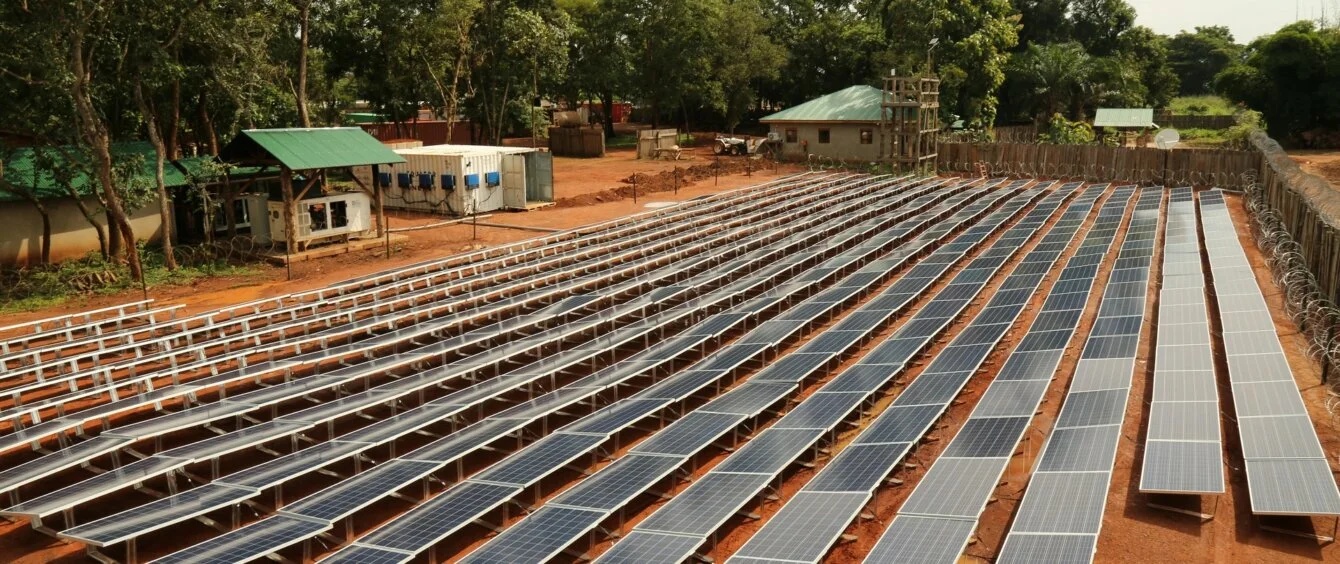The European Union intends to strengthen its worldwide development cooperation through the Global Gateway. A total of 300 billion euros are to be spent on the initiative – above all on infrastructure in emerging and developing countries. About half the sum has been earmarked for African nations in the sub-Saharan region. Plans include investments in education, healthcare, digital networking, transport, climate protection and green energy.
“The Global Gateway is investing in projects that our partners need – from natural risk mitigation to clean transport and energy infrastructure,” said European Commission President Ursula von der Leyen in the spring when announcing a new round of financing with Werner Hoyer, President of the European Investment Bank (EIB).
Guarantees and low-cost loans
The European Investment Bank (EIB) claims it had mobilised 31 billion euros for the Global Gateway via its EIB Global division until then. The objective now is to add 18 billion euros in funds to the tally.
According to news outlet Tagesspiegel Background, the funds are purposed to support direct private investments through a “mix of subsidies, loans at preferential terms and guarantees, with companies allowed to take advantage of the guarantees if, for example, they have drawn lines of credit to build new wind turbines or electricity networks, but their project abroad has failed for whatever reason.”
Focus on energy projects in Africa
A large share of the funds has been earmarked for the energy transition and construction of energy systems that are sustainable from the outset. After all, some ten percent of the world’s population still lives without electricity. Most of these people live in sub-Saharan Africa where only about 50 percent of all residents have access to electricity.
With the Africa-EU Green Energy Initiative investment package that forms part of the Global Gateway, 100 million or more of these people should be connected to the power grid by 2030. At least 50 gigawatts (GW) in generation capacity are to be built to this end. Moreover, construction of 40 GW in electrolysis capacity to produce green hydrogen has been planned. Ten percent of the 150 billion euros reserved for Africa have been earmarked for the energy sector.
Power plants, transmission lines and island grids
Featuring among the more prominent projects under the Africa-EU Initiative are a series of transmission lines connecting the power grids of several sub-Saharan nations, including a link between the Democratic Republic of Congo and Zambia and an interconnector running from Zambia via Tanzania to Kenia in eastern Africa. These transmission lines would enable the countries to trade electricity and make more consistent use of renewable energy such as solar, wind and hydro, i.e. by diverting momentary excess generation to areas of electricity shortage.
Island networks will be built above all in countries of Central Africa, running the gamut from Ghana to Cameroun and several additional nations. These are small power grids fed by distributed generation assets such as wind turbines and solar farms which, when supplemented by battery storage and fuel-powered generators, can provide a reliable supply of electricity.
Such mini-networks can constitute a less costly and faster electrification solution than transmission lines in sparsely populated regions. For instance, multiple insular grids south and west of Madagascar could give around 35,000 homes access to electricity.
Projects on all continents
The other half of the 300 billion euros is reserved to provide investment stimulus in the Asia-Pacific region, Latin America and eastern Europe. A floating PV system with a capacity of 12.9 megawatts (MW) is to be built in Albania. A further project is the Trans-Balkan Electricity Corridor, which should connect the power grids of Bosnia-Herzegovina, Montenegro and Serbia to those of the EU member states Croatia, Hungary, Romania and Italy.
The Climate and Energy Investment Programme of the Global Gateway Initiative also includes environmental protection and wildlife conservation projects as well as pre-emptive measures to combat the consequences of climate change. This includes preventing the illegal clearance of jungles and securing water supplies.
